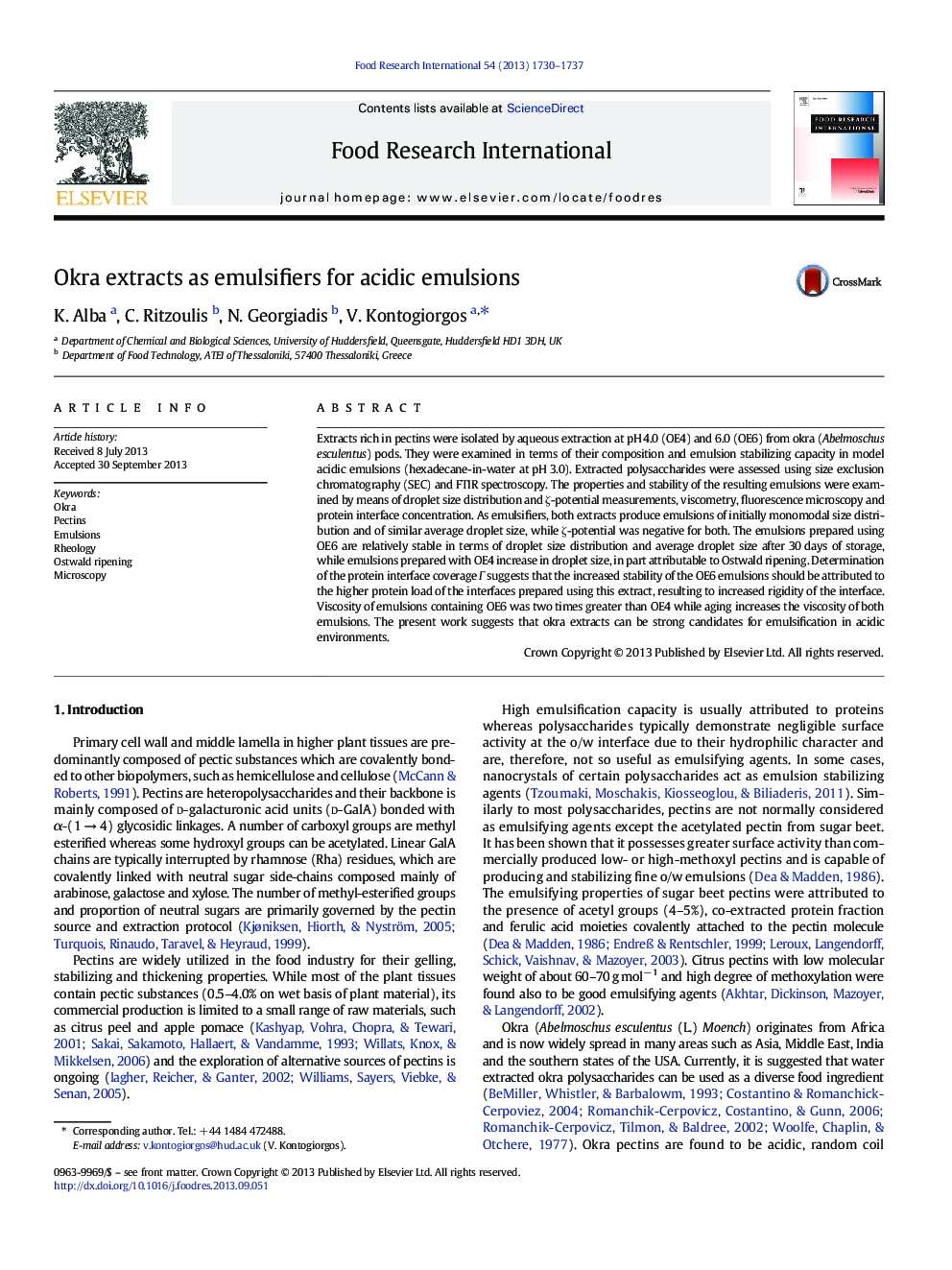| Article ID | Journal | Published Year | Pages | File Type |
|---|---|---|---|---|
| 6397415 | Food Research International | 2013 | 8 Pages |
â¢Okra extracts showed good emulsification capacity under acidic conditions.â¢Emulsions with extracts isolated at pH 6 are more stable than those at pH 4.â¢Ostwald ripening is one of the major coarsening mechanisms for both emulsions.â¢Aging increases the viscosity of both emulsions.
Extracts rich in pectins were isolated by aqueous extraction at pH 4.0 (OE4) and 6.0 (OE6) from okra (Abelmoschus esculentus) pods. They were examined in terms of their composition and emulsion stabilizing capacity in model acidic emulsions (hexadecane-in-water at pH 3.0). Extracted polysaccharides were assessed using size exclusion chromatography (SEC) and FTIR spectroscopy. The properties and stability of the resulting emulsions were examined by means of droplet size distribution and ζ-potential measurements, viscometry, fluorescence microscopy and protein interface concentration. As emulsifiers, both extracts produce emulsions of initially monomodal size distribution and of similar average droplet size, while ζ-potential was negative for both. The emulsions prepared using OE6 are relatively stable in terms of droplet size distribution and average droplet size after 30 days of storage, while emulsions prepared with OE4 increase in droplet size, in part attributable to Ostwald ripening. Determination of the protein interface coverage Πsuggests that the increased stability of the OE6 emulsions should be attributed to the higher protein load of the interfaces prepared using this extract, resulting to increased rigidity of the interface. Viscosity of emulsions containing OE6 was two times greater than OE4 while aging increases the viscosity of both emulsions. The present work suggests that okra extracts can be strong candidates for emulsification in acidic environments.
